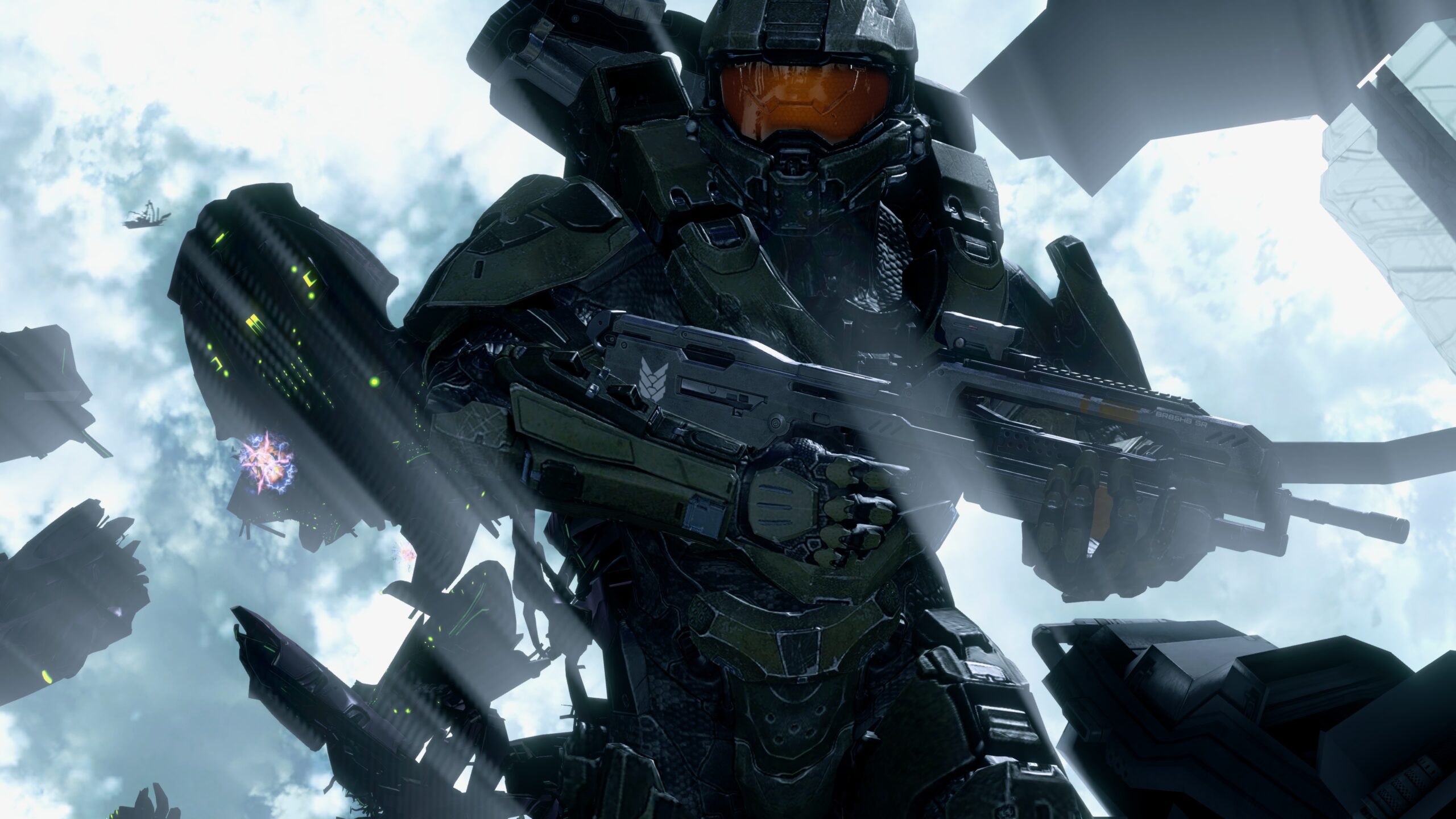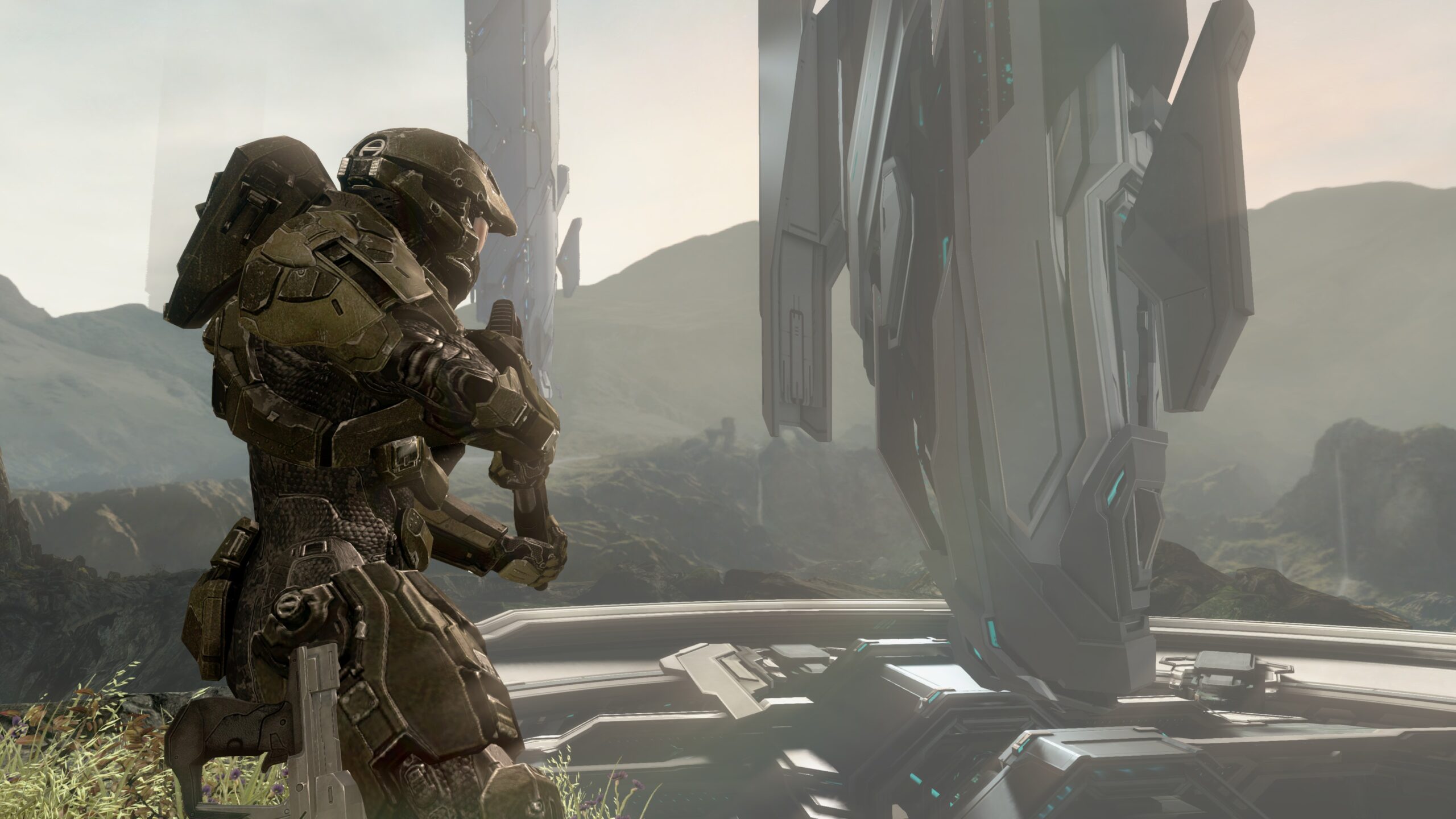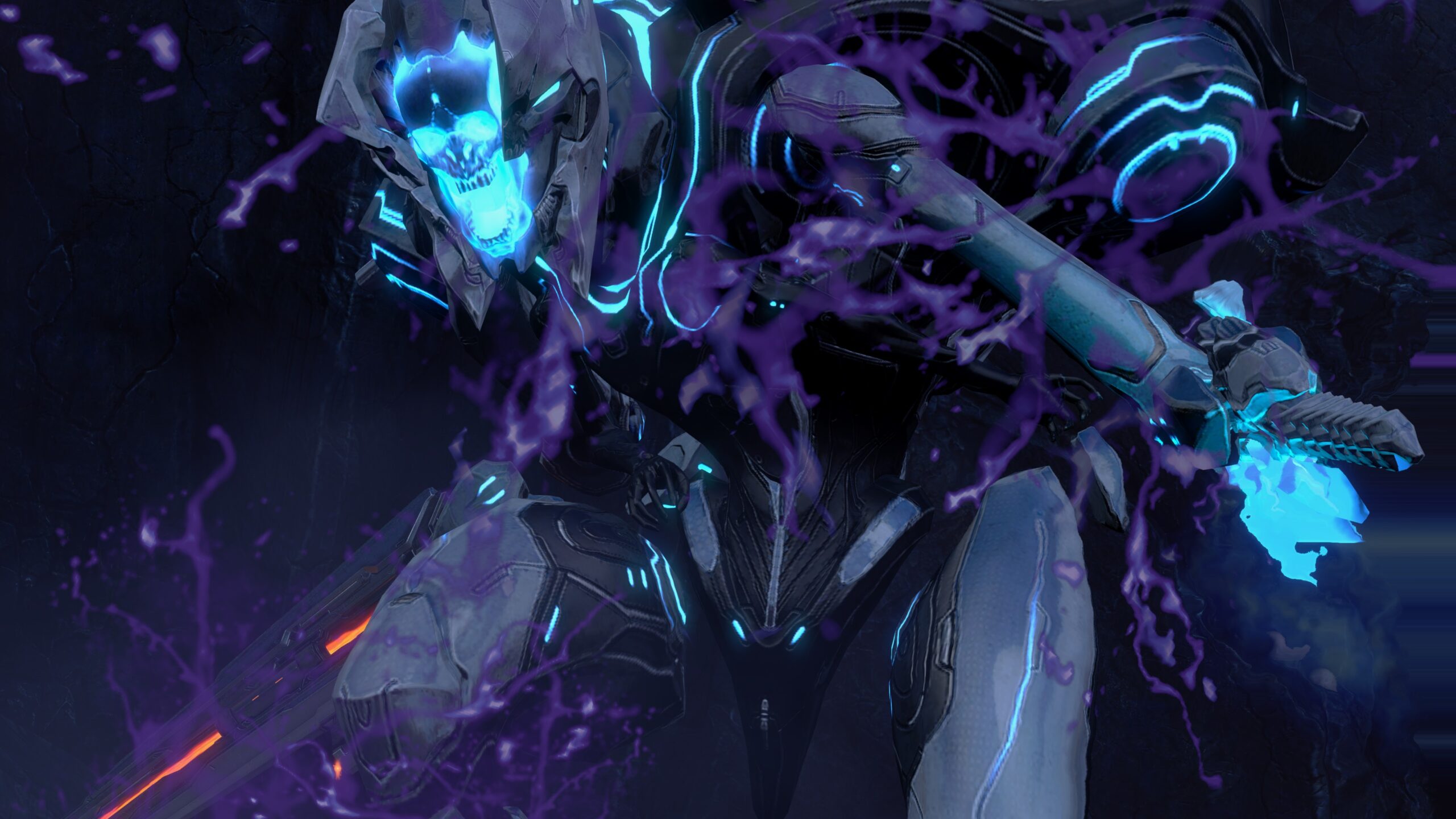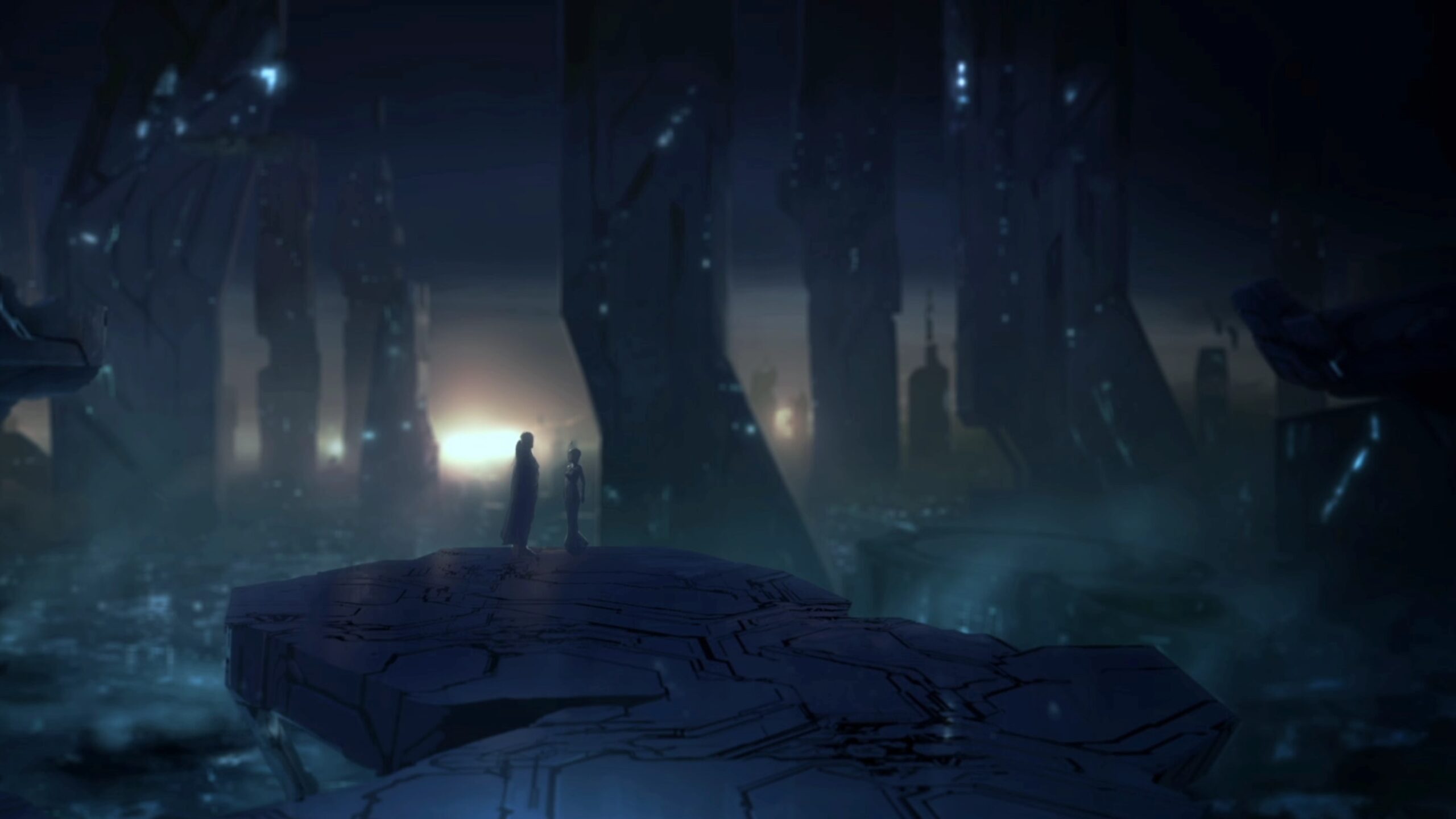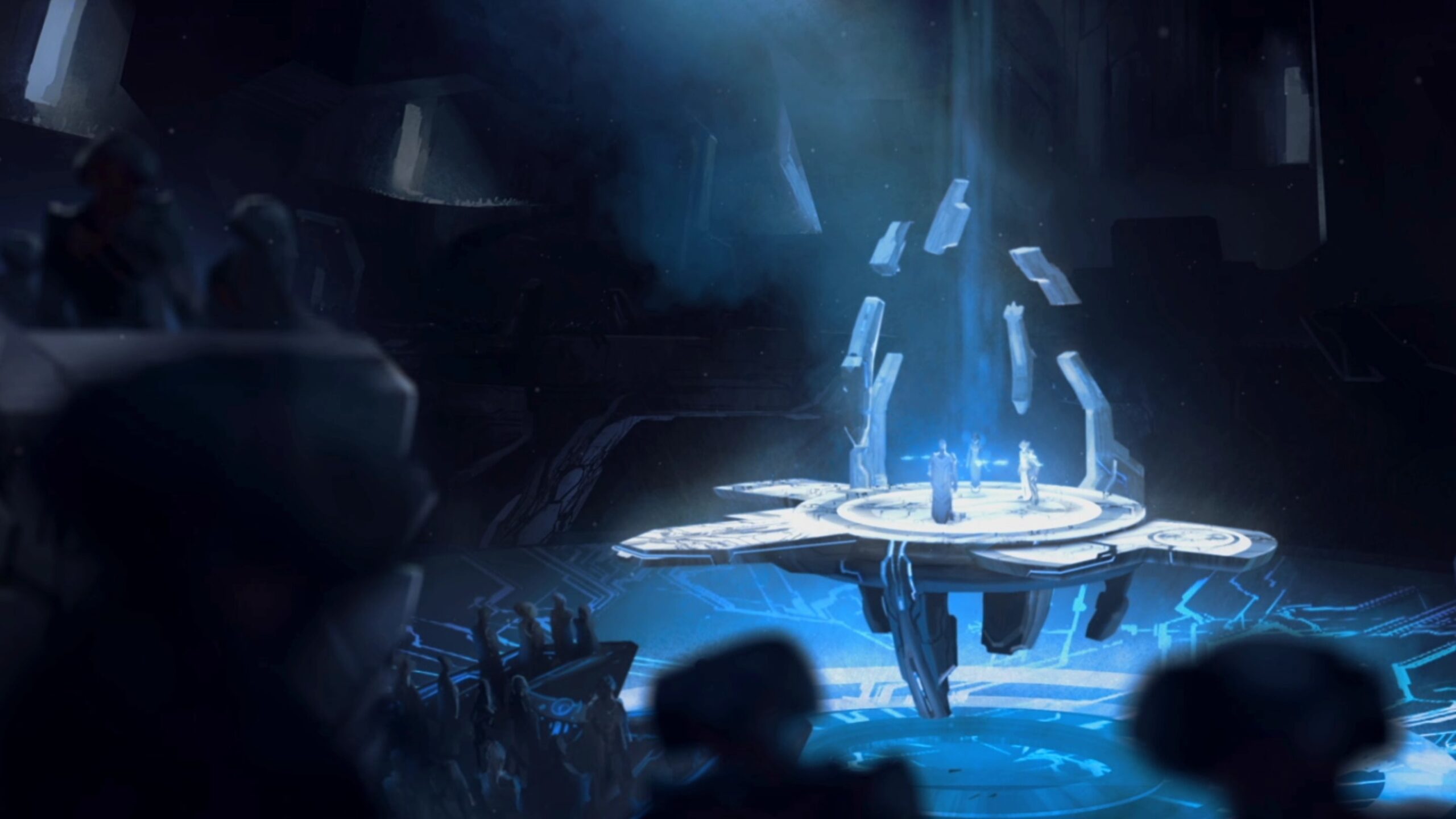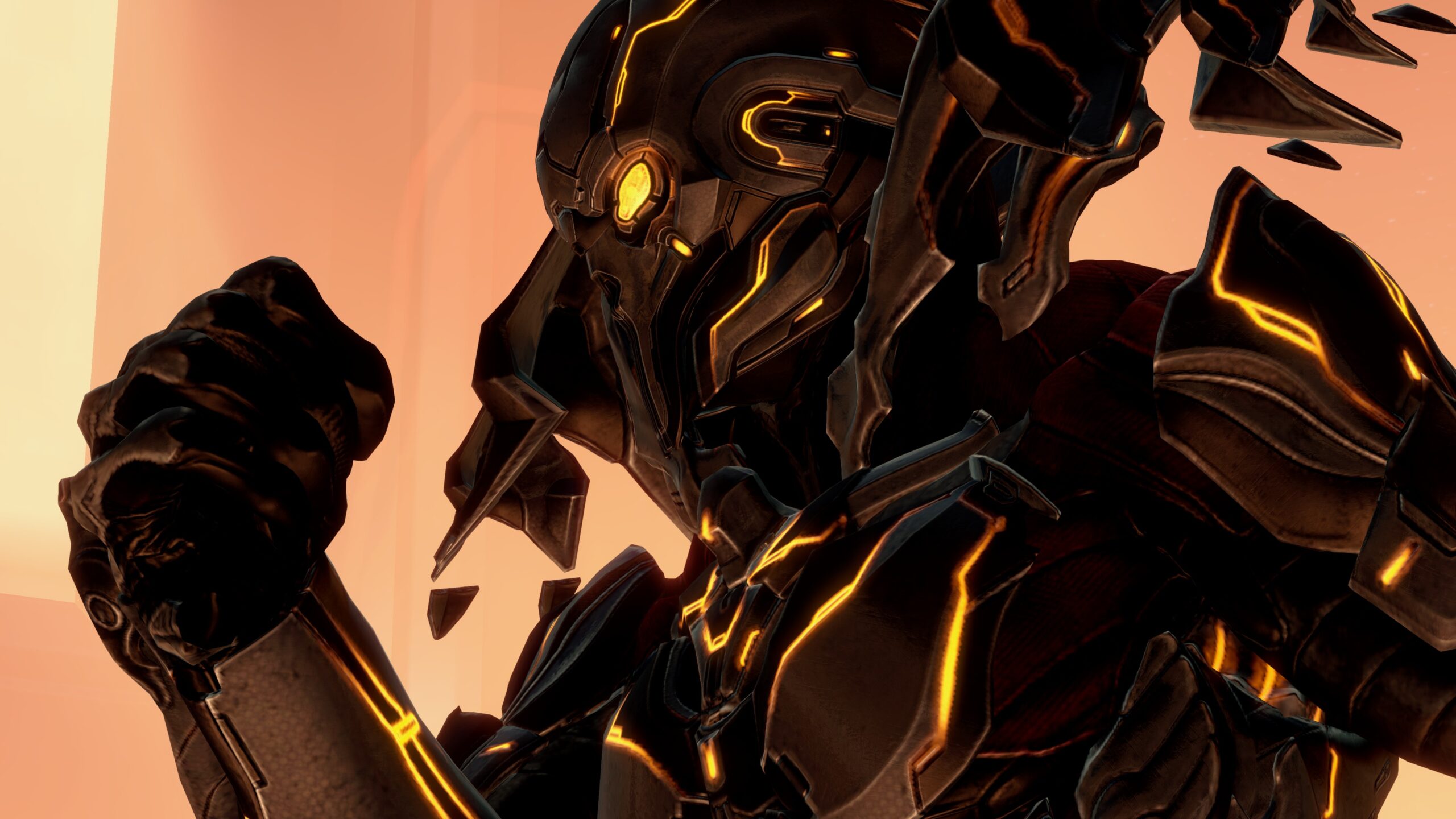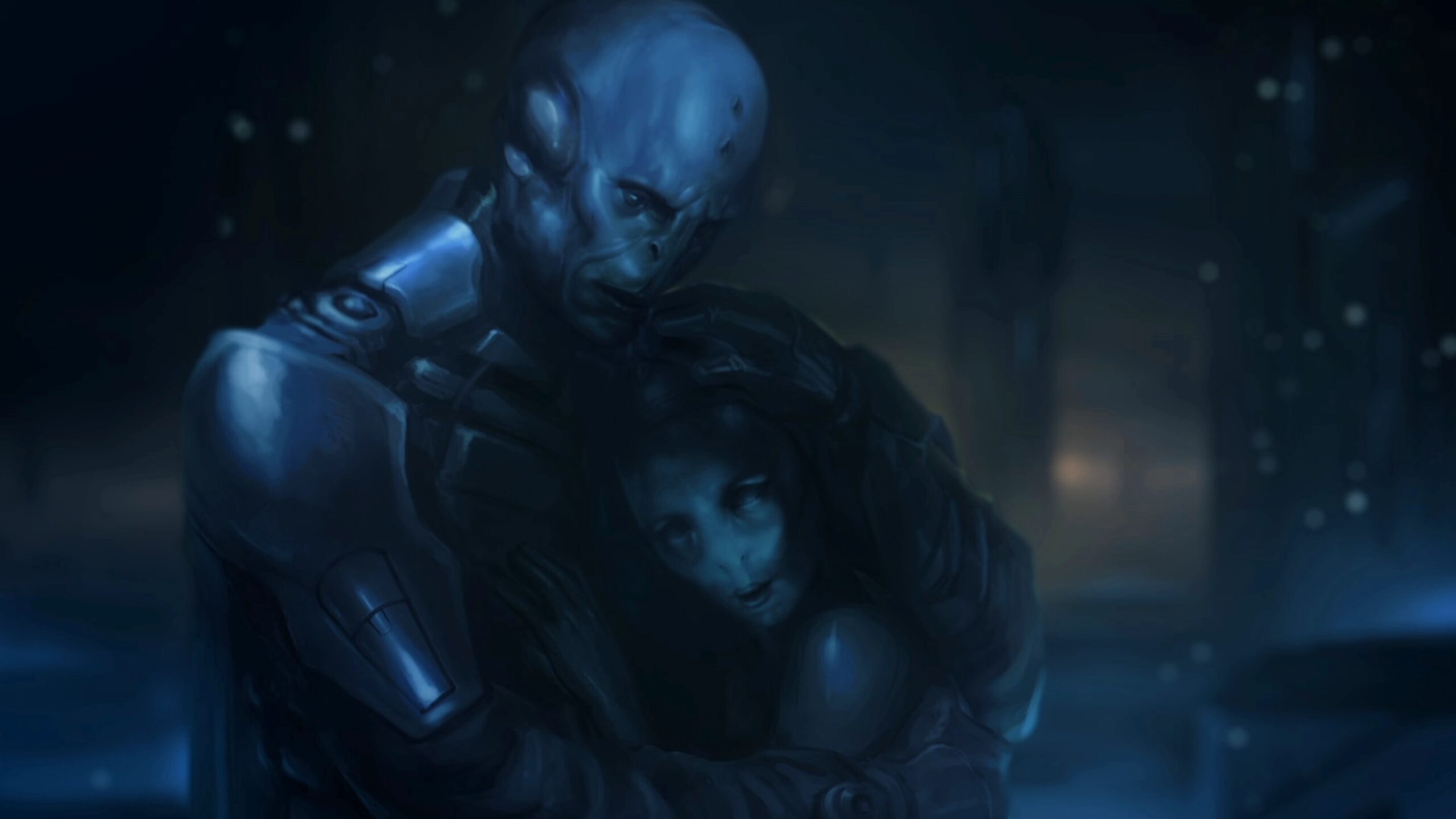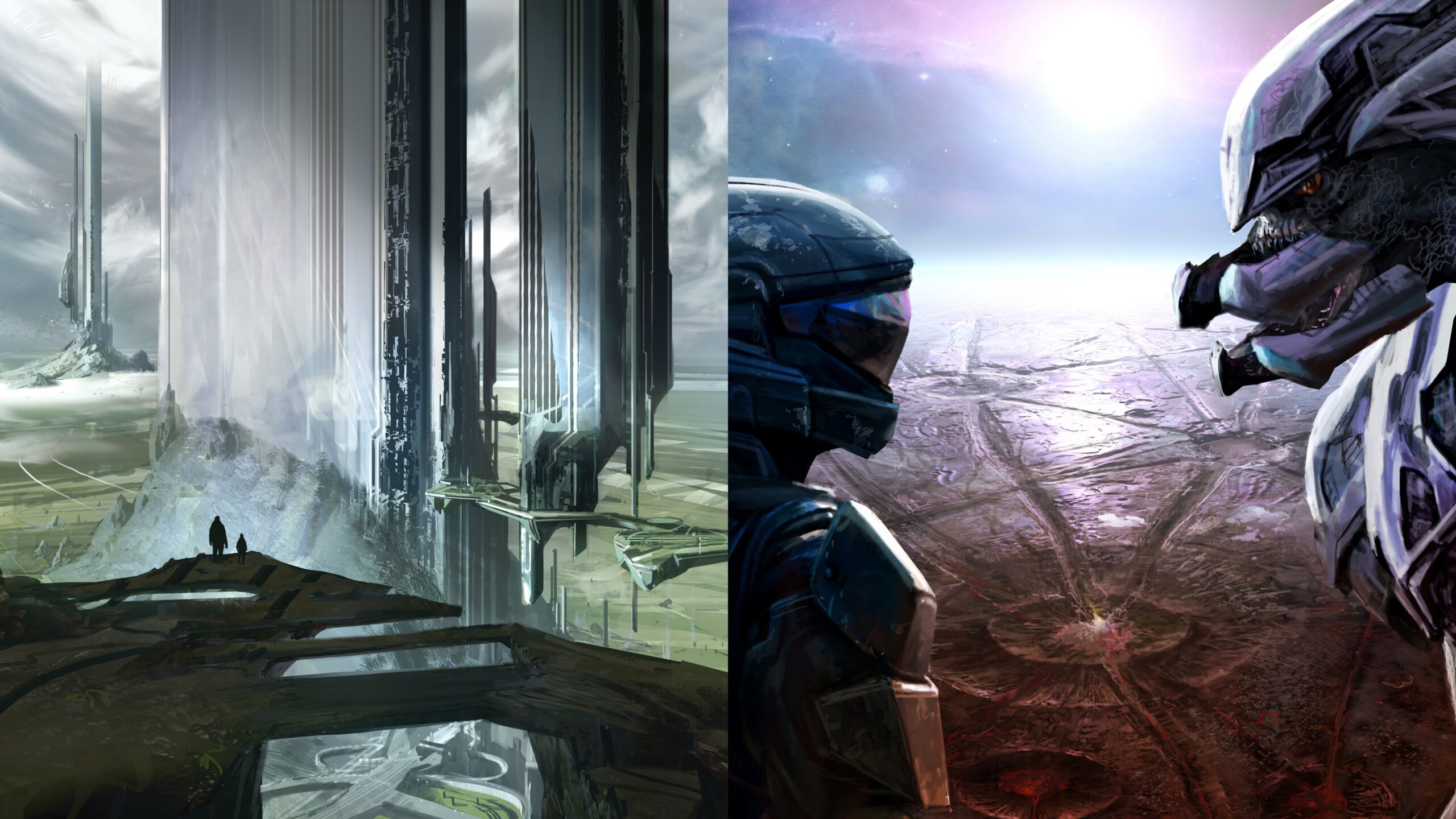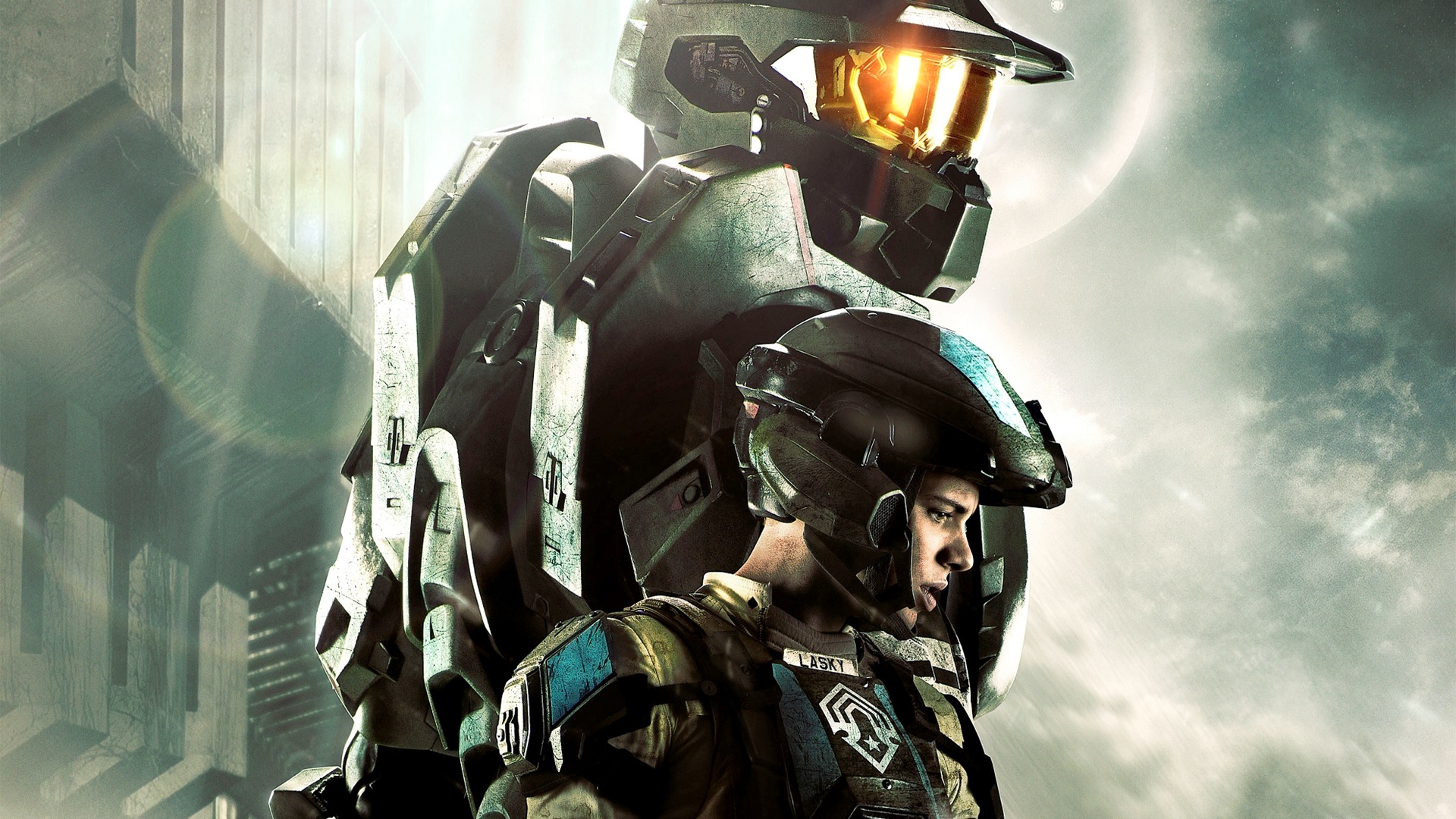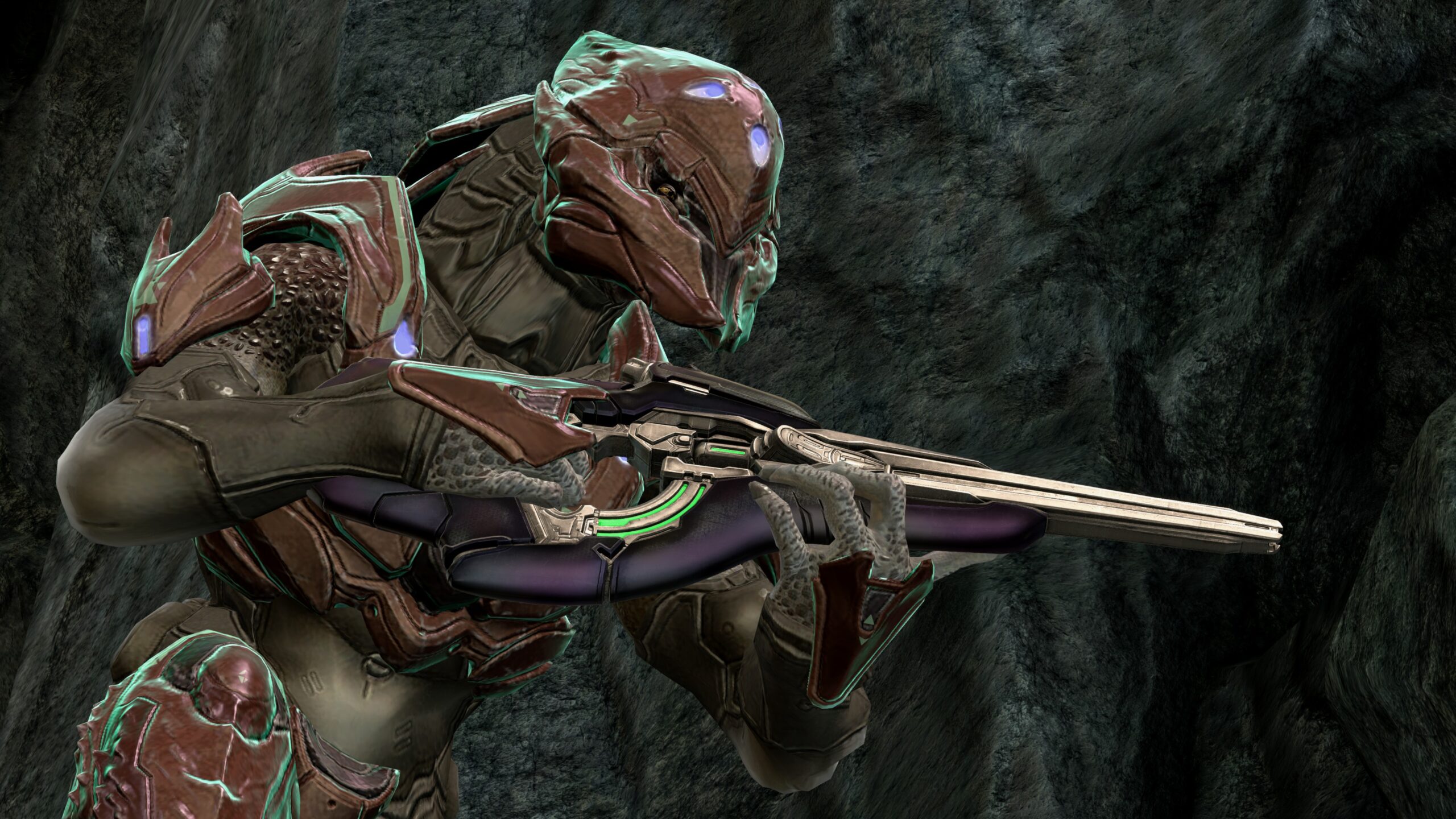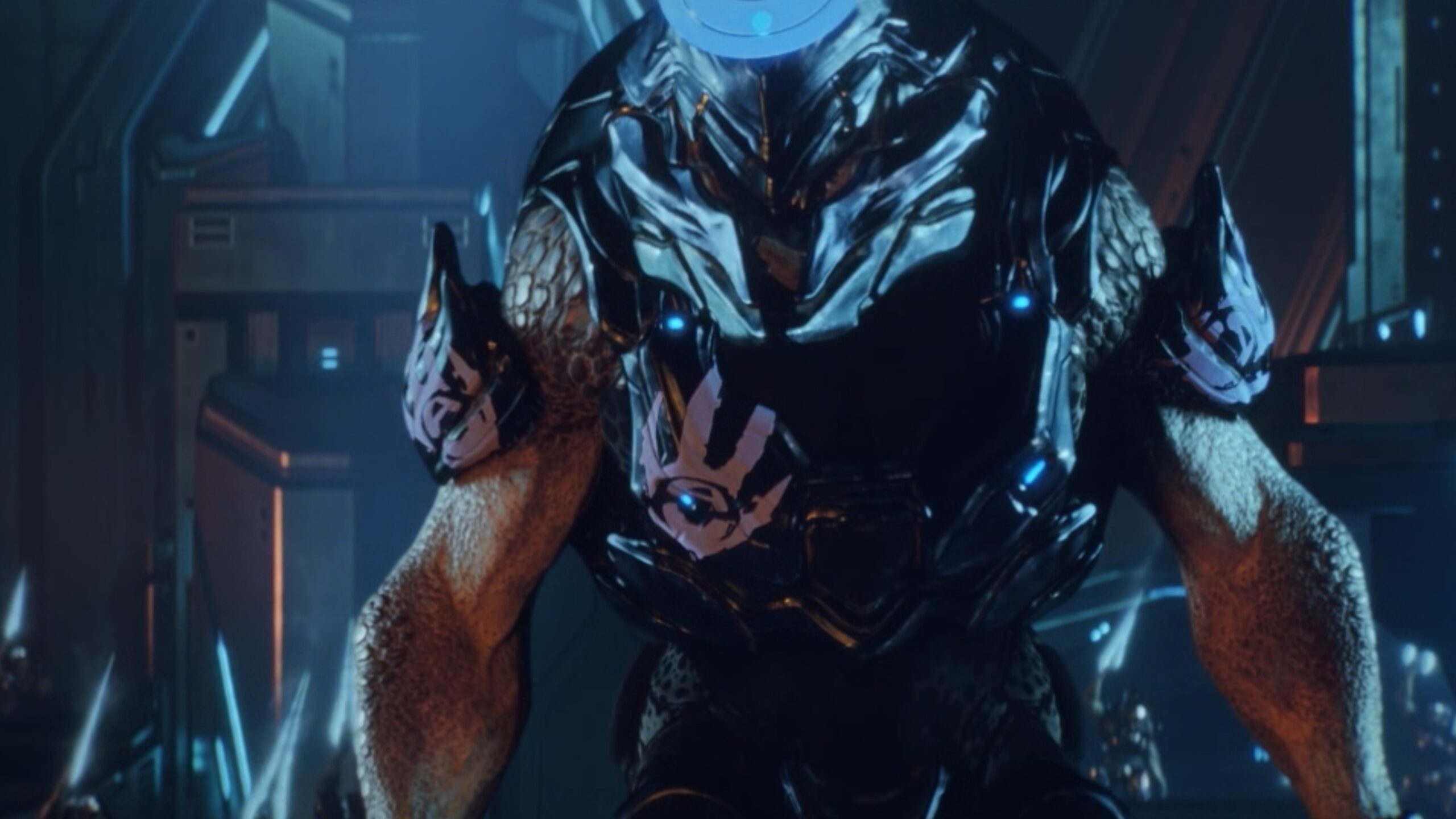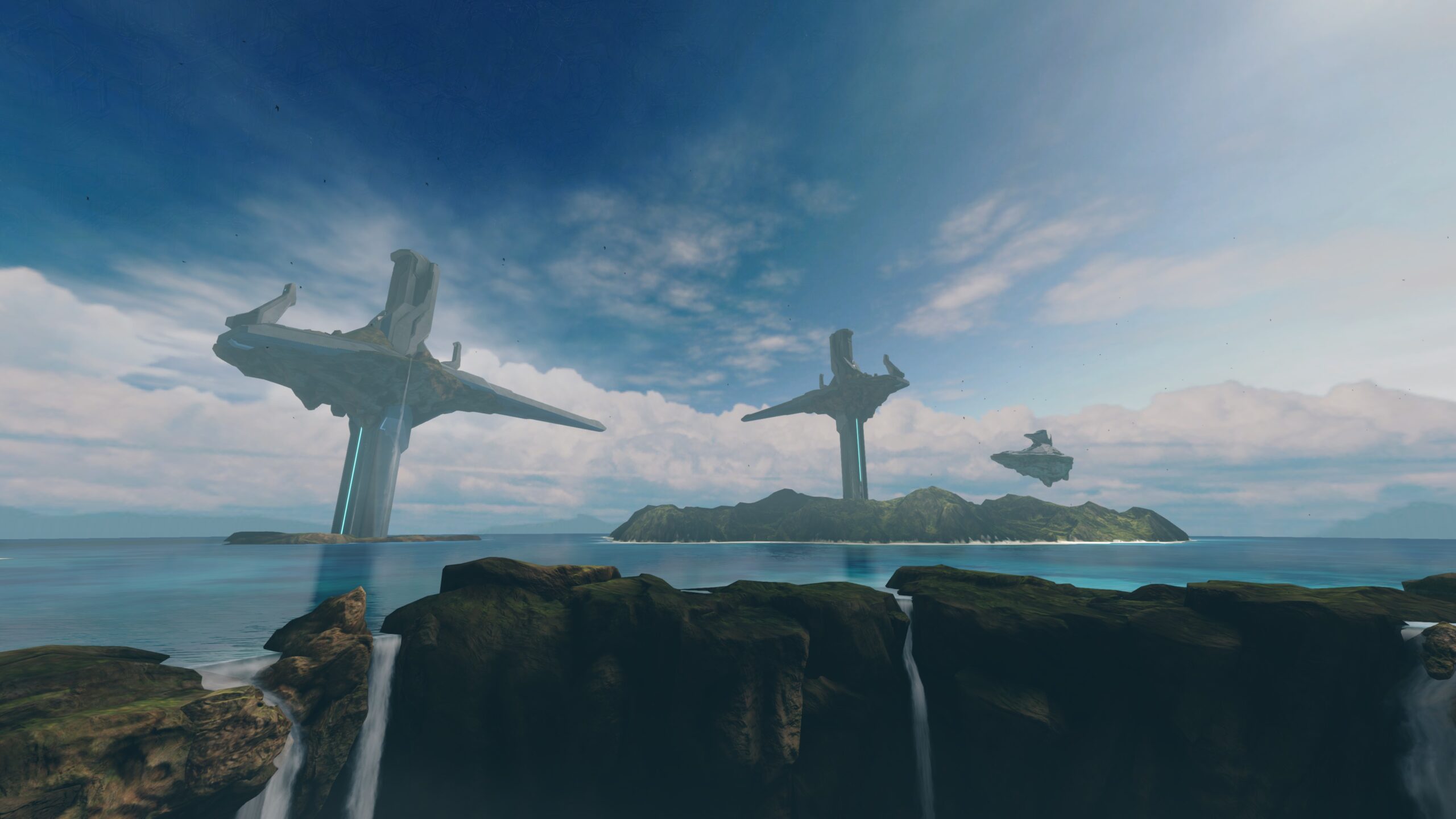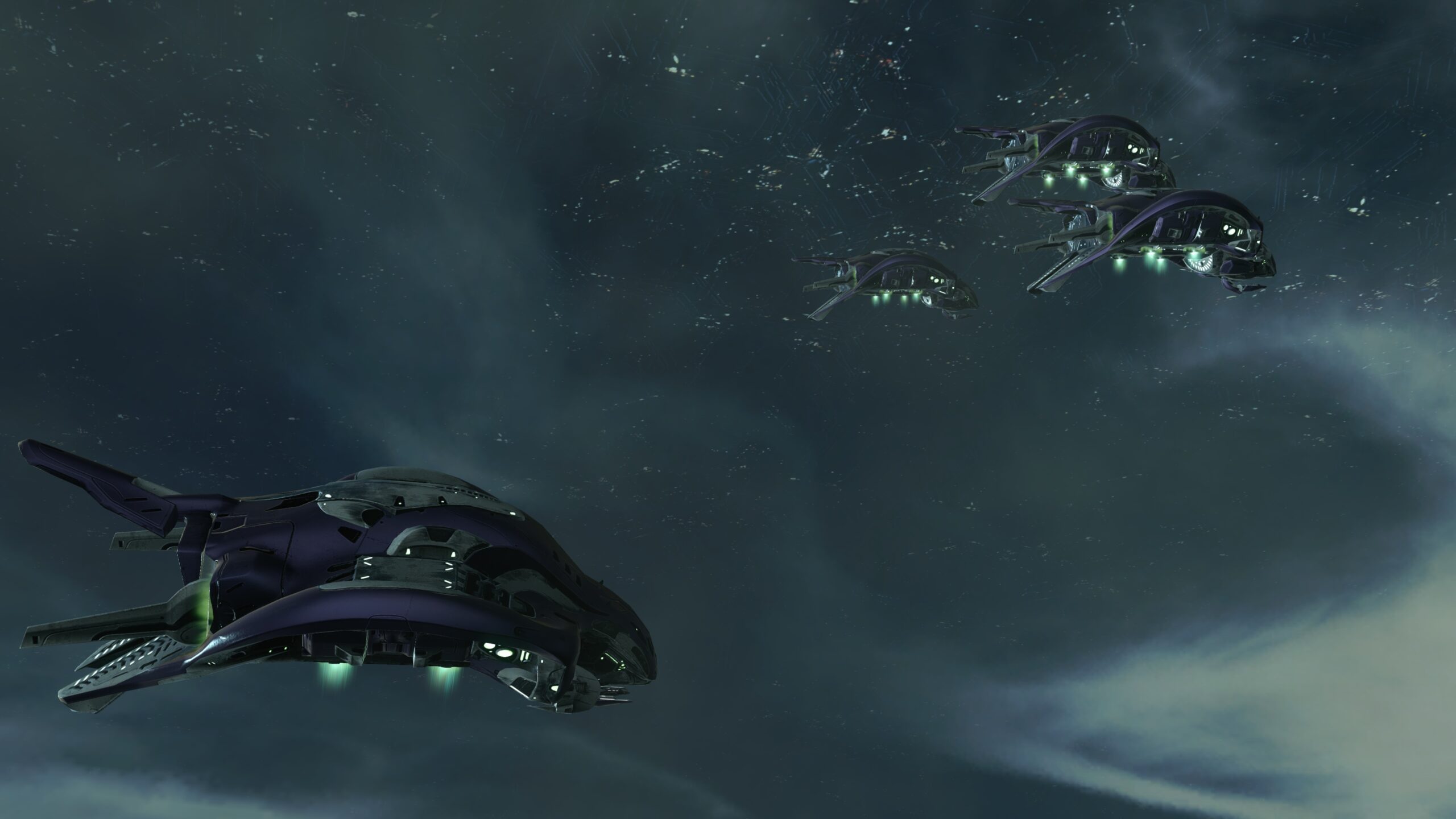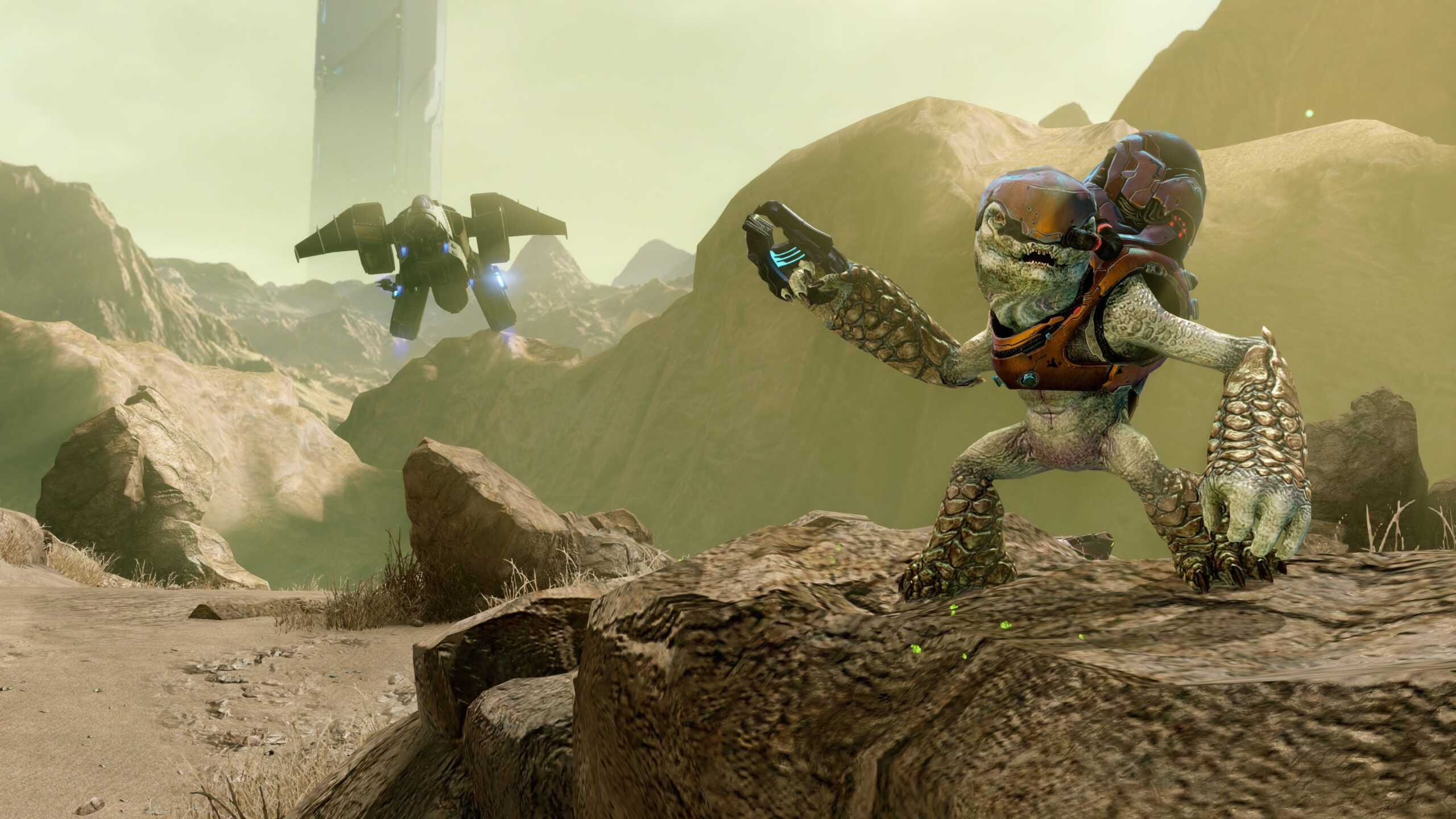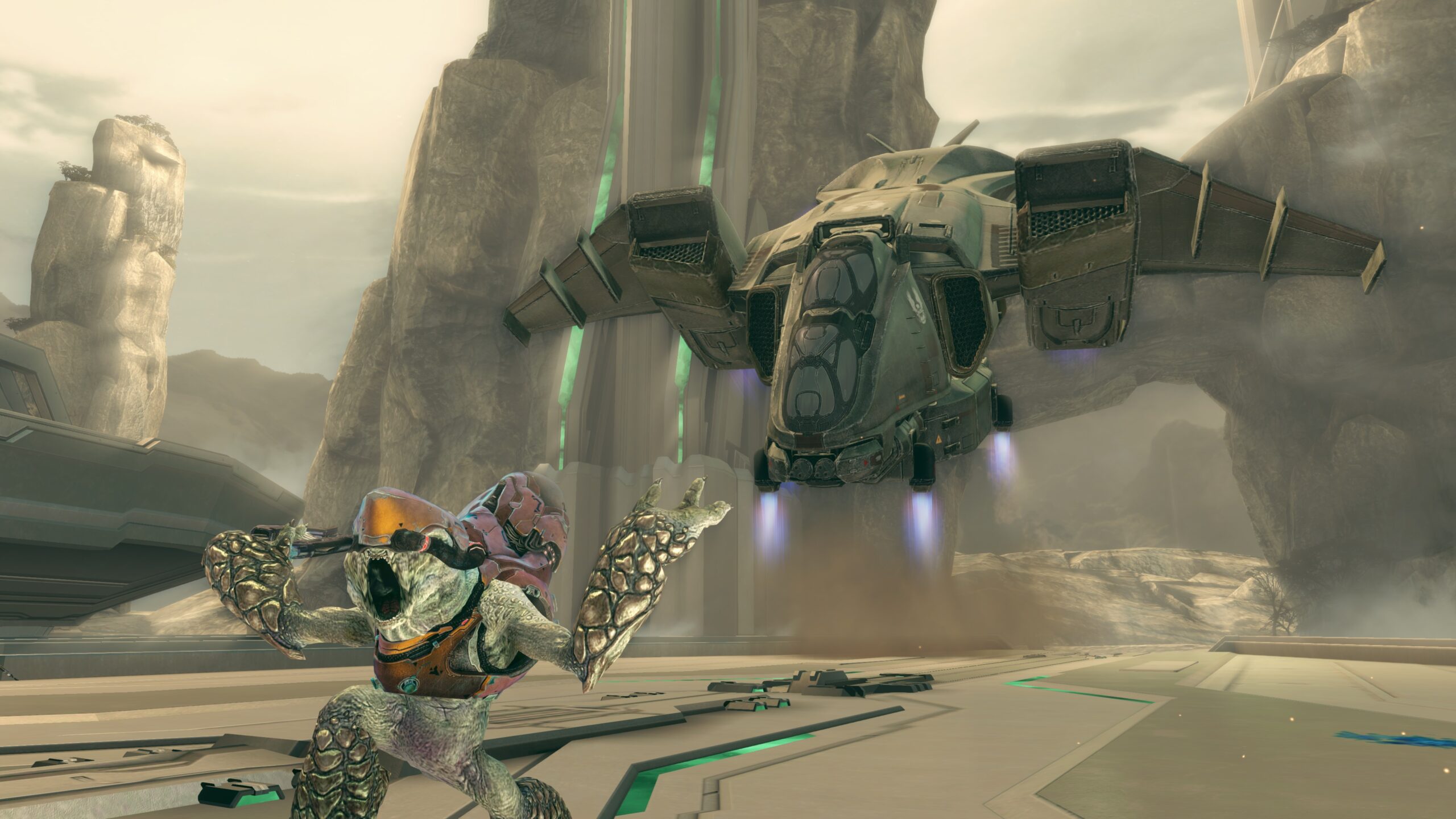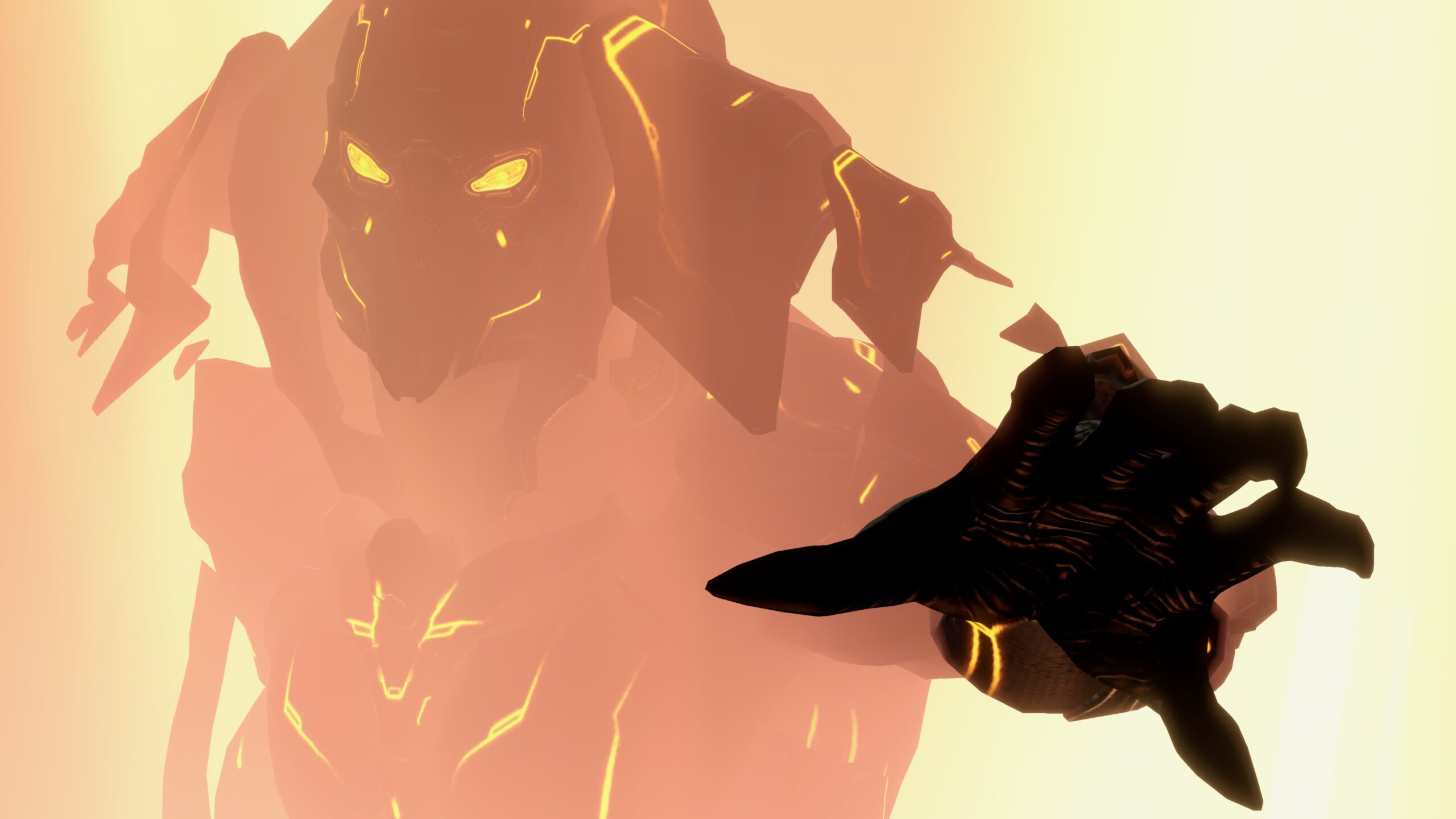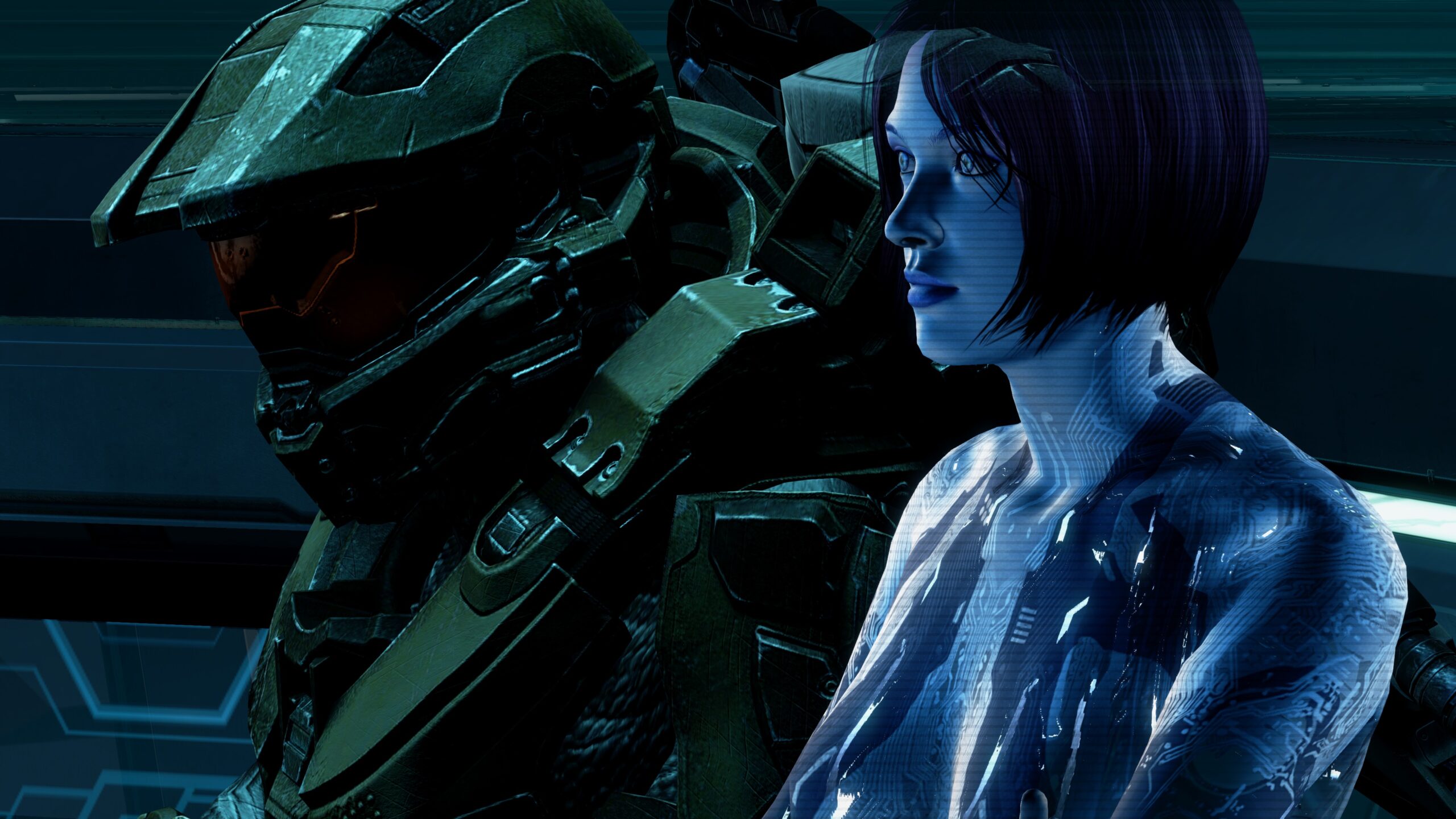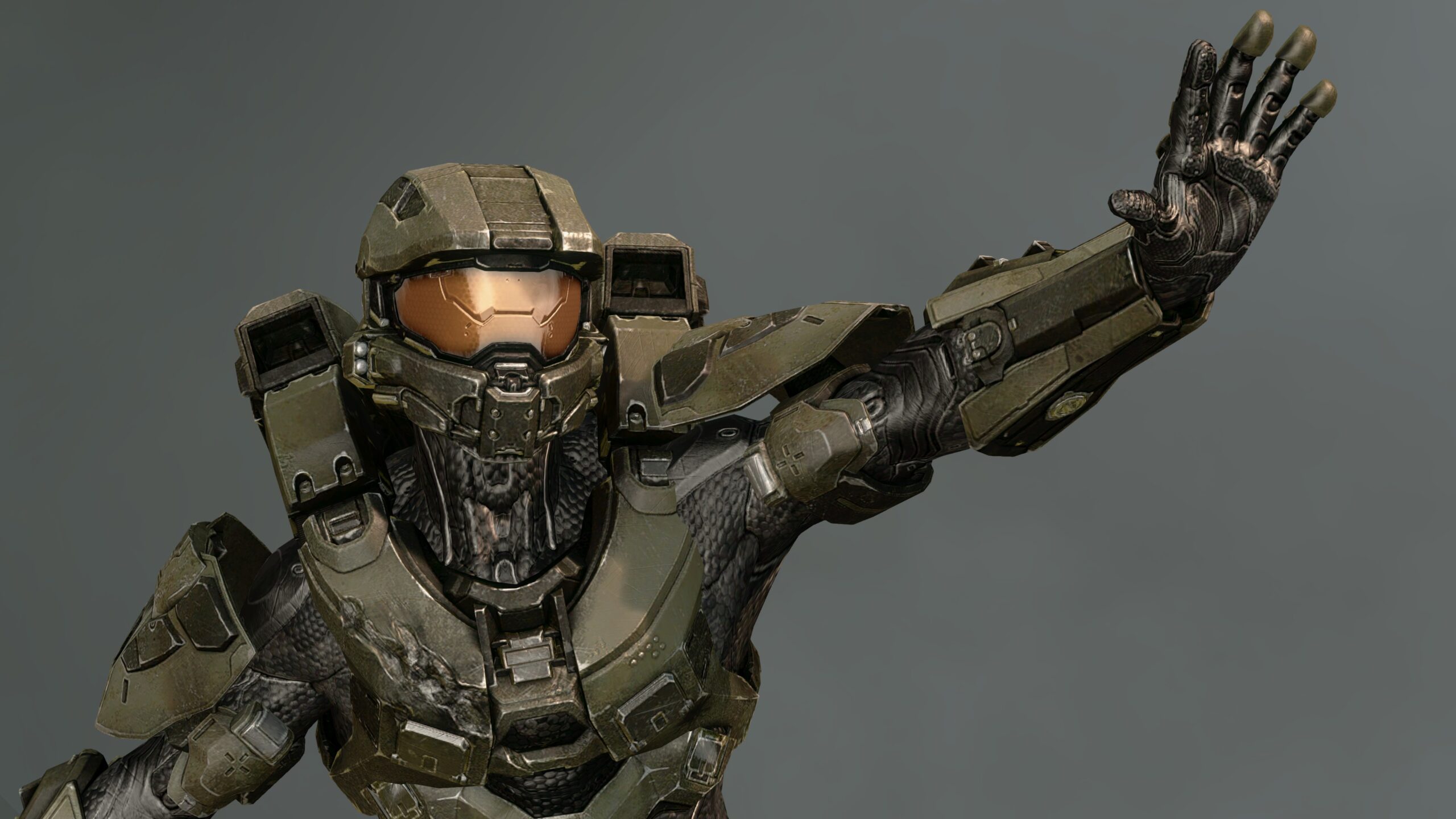Halo 4 | Tenth Anniversary
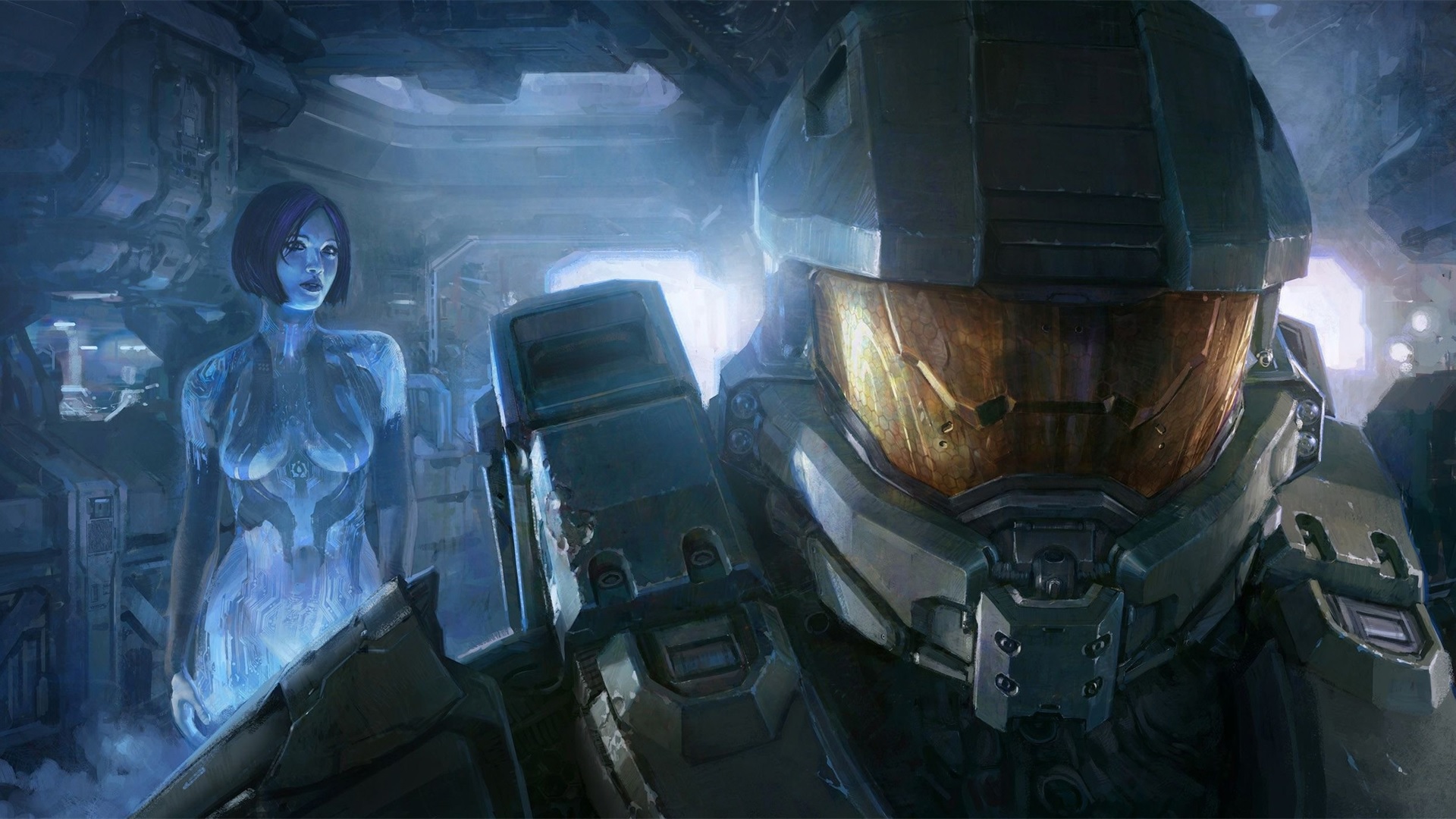
In 2007, the Master Chief finished the fight against the Prophet of Truth and the Gravemind, escaping extragalactic space with Cortana and Arbiter Thel ‘Vadam aboard the UNSC Forward Unto Dawn. Unseen forces conspired to send the Dawn to a new destination, resulting in the Arbiter making it back to Earth while the Chief and Cortana were sequestered in the vessel's severed aft section as it drifted towards a mysterious Forerunner shield world, and we were left to wonder what new fight loomed over the horizon.
That question would be answered in Halo 4, the debut mainline title entry from 343 Industries, which released November 6, 2012. Ten years ago to this day...
It’s been ten years since we made landfall on Requiem and awakened the Didact, who unleashed his army of Prometheans as he sought to find the Composer to imprison humanity within his deadly war machines. Ten years since Cortana, struggling with the debilitating condition of rampancy, sacrificed herself to go out on her own terms, save Earth, and send the Master Chief back home.
Ten years since weekly Spartan Ops episodes with Dr. Halsey’s manipulative shenanigans as we protected eggheads from hinge-heads. Ten years since BTB on Exile, since the debut of Mantis stomp (and victory crouch), since Dominion on Longbow, Ace vs Pistola, Flagsassinations, leaked camcorder footage of multiplayer matches recorded on VHS tapes in barns...
Ten years since Halo 4.
As we mark this milestone and look ever forwards to Halo’s future, we thought we’d gather some folks from the studio to reminisce about what Halo 4 means to them.
But first, some of you may remember Halo Fest 2011 where, on our journey towards Requiem, we teased Halo 4 with a concept art trailer. Today, we return to Requiem once more with an anniversary video to see how that concept art was realized into a stunning new game world for the Xbox 360, accompanied by Neil Davidge's haunting score "Legacy," capturing the ethereal, mythic tragedy of the Forerunners through Claire Tchaikowsky's soul-rending vocal performance.
KIKI WOLFKILL
It is at once hard to put into words how profound the experience of building Halo 4 was and at the same time, there are not enough words. Life-changing experiences always feel very close because of their weight and import and lingering resonance; it's hard to believe it has already been ten years since the release of Halo 4, as the memory of it feels so fresh and runs so deep.
I don't think I could pick just one aspect of the Halo 4 development experience to talk about, especially as it was so beautifully intertwined with the creation of 343 Industries itself. Would it be getting to be part of an incredibly talented team from all over the world and every game background, and together building a new studio? Was it the experience of being in the trenches with an extraordinary group of individuals and together creating something we all deeply believed in? Or was it having the opportunity to tell the next chapter in Master Chief and Cortana's story, two characters I grew up with and had always loved?
It's hard to say, but I can definitively state that the process of building Halo 4 was one of the most beautiful, challenging, and gratifying experiences I've had the good fortune to be involved with.
The seeds of 343 were a newly formed group of best-in-class artists (audio-included) and designers and engineers who left their jobs and homes to move to Seattle to do the seemingly impossible: take on the mantle from Bungie, the master originators of Halo. It was an effort fueled by a pure love for the Halo games and universe, and the belief that it could and should have a place in the pantheon of cultural entertainment icons.
With Halo 4, we were chartered with building a startup studio and with that, defining the culture that would be responsible for caretaking Halo. It was a time of incredible excitement and energy, breathless creativity and ingenuity, and not a little bit of fear. We were going to set out to do what many believed could not be done… build a new Halo game with a new team.
I have never held so much inspiration, ambition, belief, and anxiety together in my head and heart at the same time, but watching the team come together and heroically battle every day to create an experience we felt was worthy of Halo was pure magic. I can only begin to express the depth of talent and passion this group represented, many of whom are also contributing to this blog.
We learned many hard lessons, some of them through the course of development that we were able to correct, some after we released and could only correct in subsequent releases. We added a new enemy class—the Prometheans—and through that we learned the challenges of balancing the intent of new sandbox behaviors with the expectations of an already exceptionally crafted classic sandbox.
We strove to bring new gameplay elements to what was already beloved, and we brought a creative vision unique to our talent, to a universe we all loved and respected. We collaborated with new visual and audio artists, as well as those who had been with Halo since the beginning, to express new Halo worlds such as Requiem and the UNSC Infinity.
And nearest to my heart, we continued Master Chief's arc, working to express his hero's journey through themes of duty and sacrifice, and ultimately through his relationship with one of his closest friends, Cortana. Through Halo 4, we learned to make Halo.
For some, Halo 4 is amongst their favorite Halo games, and for others, it falls further down the list. I still love Halo 4 not just for the game that it is and the story it told, but also because of the journey it took us on to make it. There was a purity of intent and drive to create something that Halo fans would love because all of us were Halo fans.
Halo has always been about having hope in the darkest of times, overcoming adversity in the face of the impossible, epic stakes, and most of all, about heroes. In creating a game where we hoped to express all of these things, it seemed only fitting that we also experienced them ourselves, which made the journey all the more special.
NEIL DAVIDGE
Ten years ago already… wow, it really doesn’t seem that long, although my son will be ten in December so I should have twigged that it was coming up!
I’ve actually just introduced him to the world of Halo—he and I have been working our way through each of the campaigns, plus he loves Forge. We’re currently playing Reach and having an awesome time. He seems immensely proud to find that his dad is actually a “gamer,” much more so than being a music maker it seems…
Of course, next on our list is Halo 4.
I’m kind of nervous about playing it, a project that meant a lot to me, music I poured my heart into and struggled to get out at times. A project where I met and got to work with so many brilliant and inspiring people that I still miss.
As a newcomer to scoring games it was quite a challenge to get with the process, the traditional constructs of narrative in film don’t really apply, although as much as I could, I tried to compose thematically. But I did miss having the visual to vibe against. It was hard, I’m a visually led composer, even something as simple as the lighting of a space will change how I score a scene and what instrumentation I go with.
Instead, I took whatever info I could (stills, the Halo books, and of course the previous games) and built that visual world inside my head for each of the characters. I tried to inhabit them and write from each of their perspectives, kind of inside out, beginning with their internal feelings and questions, and then arranging on top to meet the scale of the world that each character lived within.
The piece ‘Legacy’ very much followed that way of thinking. Imagining the Forerunners, their culture, politics, art, imagining them debating in a great hall of glass and of light, these impassioned old souls and voices exchanging great ideas.
I’d previously had a conversation with Sotaro Tojima (Tajeen) and Ken Kato about finding a unique choral sound for Halo 4, moving to a new soundscape beyond the Gregorian sound that Marty had established in the first game. They suggested I listen to some traditional Bulgarian female choral music, which I did and was immediately inspired. I loved the power and passion, that full throated sound felt earthy whilst at the same time regal. It seemed a fitting place to start in finding a sound for the Forerunners.
The original piece I played on synths with a traditional choir sample library to work out the melody. It didn’t sound that great at first, I couldn’t get the phrasing right at all with the samples, but in my head I knew how it could sound. It really came together when I asked vocalist Claire Tchaikowski to help me.
Claire and I listened to a bunch of traditional songs and I tried to sing how I imagined it to be phrased. As it turned out though, she was very familiar with this style of singing from listening to the Kate Bush album “The Sensual World,” and in particular the track “Rocket’s Tail,” which featured a Bulgarian choir, so she instantly got what I was reaching for.
However, we didn’t simply want random vocal sounds, it was important to give the song meaning, but using an “Earth” language wouldn’t make sense. So, we first needed to create an “alien language” and write lyrics for the piece.
Luckily, Claire is multilingual, speaking fluent English and French, and with a reasonable handle of Italian, German and Spanish. This was invaluable, we could have found someone to create a language, but it needed to be a language that felt poetic when sung. Claire could sing the “words” as they came to her so we could fine tune how they would sound and how they would more importantly feel in their meaning.
The “words” needed to feel important and have gravity to them. It took a while longer to come up with the words than it did the melody, but it was worth it. This eventually became our idea for a traditional language for the Forerunners, in much the same way that Latin is a traditional language but not spoken in modern everyday life. This “language” also came to be the basis for the pieces “Revival” and “Nemesis.”
The initial idea was that Claire would record the demo, and once (if…) the piece was approved we would record it with the London Bulgarian Choir here in the UK, but it was instantly clear to me that Claire had nailed it.
Along with the main vocal line, she had recorded all the individual choir parts and harmonies, with some improvised from the original sketch I did and taken much further.
When she sang there was a sense of a great story being told because, in her mind, that’s exactly what she was singing about. We had talked at length about the Forerunners, who they were. I’d read as much as I could about them and gotten as much background from 343 as I could. She sang of their culture, history, science, romance… their greatest achievements and losses. She put her heart and soul into that song. I couldn’t imagine how anyone could possibly touch her performance.
It wasn’t a pastiche of Bulgarian, it was unique, it was Forerunner.
In the end I did ask the London Bulgarian choir to add their voices to enhance the scale of sound. They’re tucked away in the background, but Claire was very much the focus—her tracked up voices adding a quality, an “otherness,” that we couldn’t have achieved with a traditional choir.
I kept the various drones, sonics and tones I’d created with synths and my Kantele (very processed, played with an ebow and Cello bow) from the original demo. Then added the orchestra which Andrew Morgan and I arranged and recorded at Abbey Road studios along with the rest of the score. I also did some processing of the voices, I wanted it to sound like the performance itself was a memory, almost like those old recordings of songs from WWII, except it was from a digital age (which of course wouldn’t be affected by time but hey, some artistic license please…)
Finally, Andy Bradfield in London mixed the now finished arrangement. He and I went back and forth a little trying to realize the sound I had in my head, but as with everyone on this project, Andy brought his own individual passion to the piece.
Now… as my son and I are about to dive into Halo 4, this piece particularly is poignant, because unknown (I think…) to all at 343 at the time, Claire and I weren’t simply collaborating in a musical sense, but our shared love for music… music being what had brought us together… had become a love for each other too, and so, our son was and is, quite literally… a child of Halo 4.
Happy 10th birthday Halo 4, and happy 10th birthday Elliott.
Neil.
DAN CHOSICH
We worked our asses off. It legitimately felt like we were trying to make our stamp on the world. We were all bound together by this hope that we could pull off something that could stand next to Bungie’s Halo games. I am such a massive fan of those original games, how they were marketed, and what they inspired. My job was to create all our internal marketing: ViDocs, game trailers, some of our bigger promotional beats like E3 trailers for MP and in theater featurettes.
When I joined the studio they bought some old Panasonic cameras, a DSLR, and a light. I kept the light and the DSLR. Then I started to document the making of Halo 4. I got more equipment as time went on, but this started a long journey of being let into some very private rooms.
One of the first, most inviting, experiences was going to document the creation of Halo 4’s music in Bristol, England. I spent weeks with Neil Davidge and Tajeen. Neil and his team ended up being like family. The same was true for the audio team at 343. We spent so much time together that I grew a deep affinity for them.
In writing terms, the studio didn’t yet have its ‘voice.’ It needed a North Star. The earliest North Star ended up being the music. It was very atmospheric and synth-y. There was this rhythm of color that the music created. Almost as if you closed your eyes, pops of color could emit and inspire. It wasn’t finished, but it was something.
You can see and hear a lot of this in the first ‘concept art’ trailer that was released for Halo 4. That was the tone and mood that was being set at the time.
When I go back and think about Halo 4, a lot of what I think about is the music. It was such a unique and affecting experience for me. To (literally) stand in middle of the room while the best musicians in the world are playing Halo music is something that goes down to the bones. It’s such a powerful force. I so desperately wanted to share that with the team because it blew me away. It gave me such hope that we were going to make something great because the music alone was resounding emotionally.
There was all of this concept art, there were all of these great artists, producers and engineers, but they had never taken one thing to a roughly shippable state. All of us were looking at this with huge eyes and sinking stomachs. There was this spirit of wanting to prove something to ourselves. Even though it was Microsoft, we felt like underdogs. The tech was not well documented, the team never worked together, but somehow it came together.
With sheer talent comes a lot of personalities and a lot of tension. People were tired, stressed, overworked. It was the kind of scenario you wouldn’t wish on someone—but there were these moments where the public saw what 343 were doing and they began to believe. One of the biggest moments of “Oh, I think we can pull this off” was E3 2012. People saw the game, played Spartan Ops, and saw that 343 had the team to take on this monumental challenge.
The first time I knew we were making something amazing was when we created the first ViDoc for Halo 4.
My permanent seat was next to the audio team and we’d get builds of the game delivered on Xbox 360 dev kits. I remember myself and Paul Featherstone loaded up the third mission, “Forerunner.” The rocks in that level blew my mind. The ROCKS! That was the first exterior environment that was just mind blowing to me. It felt next generation.
I remember taking the game camera and inputting a bunch of legacy code to create a depth of field effect, then translating the camera along the ground. As I did this, our engineering lead stopped in his tracks and said, “Holy shit, I can’t believe our game looks this good!”
I can keep typing but the reality is that 343 was an idea before Halo 4. It was a publishing arm that was helping to support Halo. It was doing interesting things in different windows and spaces, but those endeavors were finite and outsourced. Halo 4 turned 343 into a team. Halo 4 turned 343 into a studio. 343 was more an idea before that and Halo 4 was the game that aimed to say: “We make Halo now.”
I, personally, always had a bit of mixed feelings about it. We didn’t make Halo, we took on Halo. 343 used to say, “We are the custodians of the Halo franchise.” I think that’s the most accurate definition. We shepherd it. Halo isn’t owned by one given thing anymore, it’s a collection of ideas and experiences that live in people’s heads. Those memories and those shared experiences are so important to uphold and preserve—but at some point, you do need new memories that can become touchpoints for future generations.
CORRINNE ROBINSON
Halo 4 was an exciting time at 343 because it was an era of possibility. We were working on the first new Halo game from 343 and it was going to have new enemy types and a new look. We were working on new novels that explored the ancient era of the Forerunners 100,000 years ago and the post-Covenant War era with Kilo-5. We got to celebrate Halo with fans at the very first Halo Fest in 2011 (including a Halo 4 panel which had some sneak peeks).
During this time, we were also in production on Halo 4: Forward Unto Dawn and getting ready to film and launch our first live action offering to the world.
Halo 4: Forward Unto Dawn was magical to work on and I am super-proud of the final product. It was a small production, so 343 had great connections and a direct line to the entire crew. The director and assistant director were both big Halo fans and they worked together to think through how each scene would play out if it were actually within the Halo universe. The production was filmed in Vancouver, Canada, utilizing Simon Fraser University as part of the fictional campus for the ‘Corbulo Academy of Military Science.’
Being headquartered in Washinton state, we were close enough to go up and see things in-person which was a huge benefit. Getting to be in on the ground floor of a production like this where you get to see the amazing set designs and costumes as concepts, and then the care taken in the progression to lift them straight off the paper to become fully immersive, filmable pieces was extraordinary.
If you like Halo and have not seen Halo 4: Forward Unto Dawn yet, it's worth a watch! In fact, if you’re looking for an entry point into some of the expanded universe elements of the franchise, this is a great place to start.
One other memory I have from Halo 4 was working on the limited-edition console. Sometimes the limited editions are confined to the color or design on the outside of each unit—and maybe a sound for the power button... For Halo 4, it was the end of the 360 generation, so they let us experiment and try things that normally would not be on the table.
Using transparent materials, painting on the inside and outside of the console, and using metallics all had to be tested and approved. Changing the classic green Xbox light to blue was the final touch to make it look more like Halo, and it ended up being a really unique console befitting a really unique game.

GLENN ISRAEL
Evolution is always a controversial topic.
Halo 4 followed the gradual model for me; it was a continuation of the work I’d done on ODST and Reach, specifically where the Covenant aesthetic was concerned.
I saw it as an opportunity to take aspects of their identity that were in the fiction, but as-yet unexplored in the experience, and make them visible.
The idea that Covenant “technology” is often nothing more than a skin, literally grown around a revered (if poorly understood) Forerunner core. That Covenant “culture” is schismatic, rife with dispute, not just between species but between creeds. That Covenant “history” is a lie, a series of myths and deliberate misinterpretations of events meant to manipulate its believers without question.
To my mind, Halo 4 asked “What would it look like if all of this went out of control?” and in response the Hand of the Didact was born. The Covenant evolved.
It was an ambitious direction to take but it felt like a natural one, to steer these few Elites and their followers away from their noble bearing and physique, to make their weapons and armor overgrown, to make them wilder and more threatening in every way. Animals, not warriors—monsters to fear.
It felt like a bold but focused incremental progression, a means to show as well as tell the story we intended as comprehensively and viscerally as we could. We were stoked.
What was gradual to us felt too punctuated to many upon release, of course, but ten years on seems like the right time to clear the air. Despite the rumors written then, there was no drive nor demand to reinvent for reinvention’s sake, no “hate” for the legacy, and nothing to prove but this—we understood the mantle of responsibility we had taken on, and we loved Halo as much as you. Ten years on, we still do.
I am as proud today of the work we did on Halo 4 as I ever was for Reach before, or Infinite since, and I’m truly glad that you’re still here to evolve with me.
DAVID ELLIS
Halo 4 was a project of discovery. We pulled hundreds of the most talented people from around the world together and said, “Hey, go make a Halo game.” We didn’t know what we didn’t know. That was sometimes a blessing AND a curse.
For those who were here, it’s hard to forget the words “Stable M7.” I can’t say enough amazing things about the engineering team that took on the gargantuan task of integrating the final Reach engine drop into our in-progress development environment. Their work on this project was truly “space magic.”
We were regularly figuring things out as we went along, so staying in constant contact with the team around you was key. This led to some long-lasting relationships that continue today for those of us who were in the trenches for Halo 4.
My favorite period was showing off the whole game for the first time at E3 2012. From kicking off the Xbox Showcase to feeling the energy on the show floor, that experience elevated everyone on the project’s energy.
The excitement of the fans carried the team all the way to launch. I remember getting the chance to hang out with Neil Davidge one night during the show, talking for hours about the creative process and what we liked best about creating. He had no reason to be that gracious or kind to someone who was just a junior designer at the time, but I’ll always appreciate his generosity.
GREGORY MURPHY
For Spartan Ops it was really exciting to experiment with different game rules and encounters than the campaign but with the same sandbox. To build multiple encounters and progression on the same level was great creative fun because of the challenge. It was exciting to have a different storyline from campaign with more points of view and characters.
On a personal note, we had a few of us sitting together making content for it. There was great creative “synergy.” We had fun inside jokes and feel-good pranks, like hiding the CD and the “hamburger” candy on desks and waiting for people to find them. The CD that made it to the library inside a library book and then the library calling Kevin Schmitt about the “lost” CD being a great memory.
KEVIN SCHMITT
I remember interviewing for 343 shortly after the announcement of the Reclaimer Saga. I tried to get as much information as I could during my all-day interview, but everybody was tight lipped and only repeated what had been said to the press. I mean, I knew it was Halo, but beyond that, no idea.
On my first day, I met up with Greg Murphy and Brad Welch, and they sat me down and explained we were going to work on this little side thing they called “Spartan Ops.” I’m not even sure if it was officially called that back then. The only thing they had was a loose collection of possible locations to be reused for small replayable encounters. Greg had engineered a new way to create waves with a small set of rules and we got to work.
I had always been a fan of narrative driven games, so I was always looking for ways to add more story to these missions. Little bits of lore here and there... we didn’t really have a budget for this at all, but I kept adding things.
Pretty soon it started to take on its own life. We brought in a couple of narrative designers to help us craft the story and implement the cinematics for the intros and outros. The long days sitting around the big conference room table at the old 343 building and coming up with ways to tie it into the lore were so much fun. Like Greg said, we had a little bit more freedom to stretch beyond the main story from Halo 4, narratively and gameplay wise. What If we have a level that was just a ton of Watchers that spawned in all over? What if we had a level that was mainly Phantoms and we put power weapons all over the map? We had a lot of fun just coming up with all the quick and crazy scenarios.
And those Axis Cutscenes?! I remember seeing the rough cuts of those and thinking how cool they were. And then I remember a couple of execs sort of yelling at us that we ended up doubling the budget for Spartan Ops or something. Lol. But it was all worth it.
I got to show some of the missions off at a few trade shows and I still have my “Halo 4, Majestic 04” nameplate from one of the stations at PAX.
We had a small break, and then it was back to work on the second half of the season. That was particularly challenging because we had shipped Halo 4 and the majority of the studio had left to take time off. We pretty much had our run of the place.
One day, near Christmas break, we were trying to fix a 4-player bug, but there were literally only 3 people in the studio... I think it was David, Greg, and myself. One poor employee came in to pick something up and we ended up talking them into staying for a few hours to test the game with us.
Being able to play with the rules a bit like we did was a lot of fun.
And yeah, that Library story Greg told was true. We had all thought that CD was lost so imagine my surprise when the library called to tell me the “good news” that they found it. I’m not even sure who put it in there in the first place.
Also, forgot about this... when we moved offices to Redmond, back in 2016, I remember finding one of the gummy hamburgers in my stuff when I was packing up.
For me, it’s always been about the journey more than the destination, and Halo 4 was wonderous and challenging, as well as a huge moment of growth in my career that I will always be proud of. Sharing launch night with our fans and seeing the love for this universe is something that I always carry with me.
LOOKING FOURWARDS
Keep an eye out tomorrow for the arrival of a new online short story on Halo Waypoint, following Fireteam Shadow as they embark on a daring mission to destroy a Covenant cruiser during the events of Halo 4's Spartan Ops.
For those of you who tuned into Canon Fodder LIVE at the Halo World Championship event on October 23, you no doubt caught the announcement of Halo: Epitaph, the next Halo novel by author Kelly Gay.
This was a particularly special announcement as it explores the continuation of the Didact’s story in the aftermath of Halo 4 and Halo: Escalation, and we’ll be doing a round-up of information about this in our next written issue of Canon Fodder later this week.
Looking to the future of Halo 4 as part of Halo: The Master Chief Collection, we’ve got a number of exciting things being cooked up.
First of all, mod tools. We’ve been gradually providing mod support for each successive title, and Halo 4 is next on that list. As ever, we can’t wait to see what this enables folks to alter and create!
We’ll also be implementing new skulls to the game, namely Acrophobia and Bandana, along with golden moa collectibles in the campaign and some legacy multiplayer perks that haven’t yet come to MCC.
Theater mode is a beloved feature for Halo fans. Ever since it shipped in Halo 3, it’s been a tool for the community to take and share cool screenshots, but it also allows us to delve into more of the details of various level spaces and environments that you don’t always get to fully appreciate when in the midst of a frantic gunfight.
And so, saving perhaps the best news for last, drumroll please...
We’re looking to get Theater mode operational for both the Halo 4 Campaign and Spartan Ops for all players!
So, when will these things be coming? Some are due to arrive later this month with the November MCC content update, while others are a little further down the road. Stay tuned for further information!
WELCOME HOME, JOHN
And so, you come at last to the end of this Halo 4 anniversary blog.
We hope you enjoyed this trip down memory lane, gained some interesting new insights into various aspects of its development, and have a few things to look forward to in the future!
For me, Halo 4 was—and still is—a series favorite in so many ways, and I have only come to appreciate this era even more from learning about the breadth and depth of the challenges the team faced in making it.
So, hop back into the campaign for another ride of this emotional rollercoaster, jump into a few rounds of multiplayer (honestly, BTB on Exile never gets old!), hit up some select Spartan Ops missions (I highly recommend “Seize the Power” from Episode 10), and immerse yourself in the now decade-old nostalgia of trailers and ViDocs gathered here...
For now, there is but one thing left to say.
Axios.


